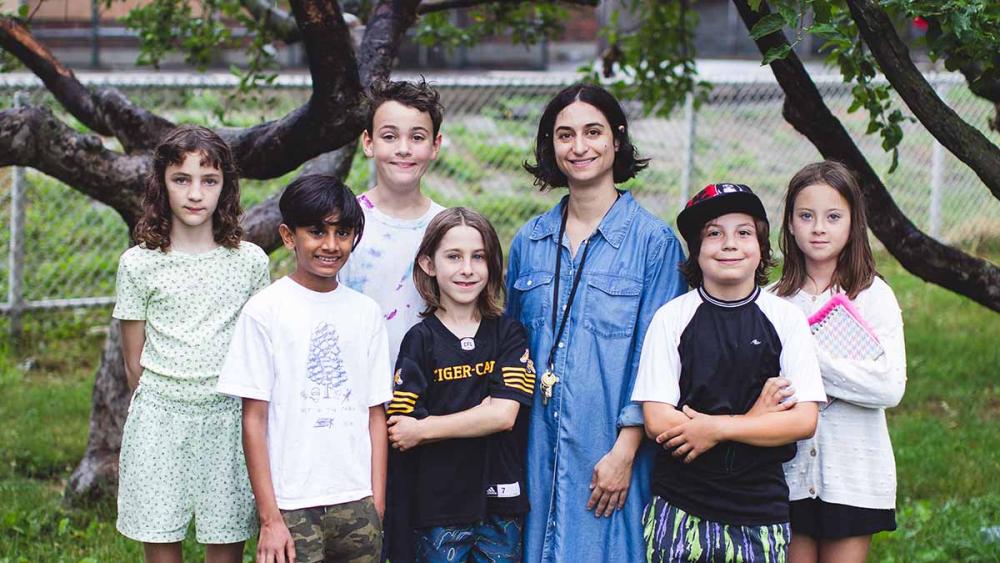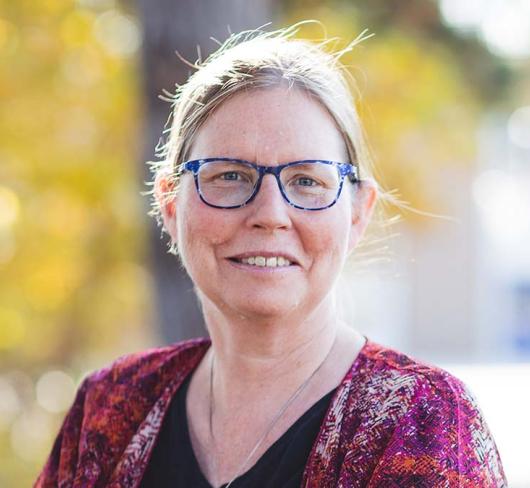
Understanding Climate Change and Bringing Advocacy, Art and Indigenous Wisdom Into the Classroom
Climate Change 101
Temperatures are rising globally as a result of human activity, particularly greenhouse gases being emitted into the air. Burning fossil fuels such as coal, oil, and natural gas causes approximately 70-80 per cent of the emissions driving climate change. In 2015, 196 nations signed the Paris Agreement, an overall goal of which is to limit warming to 1.5º C above preindustrial levels. Today, global temperatures have already risen by an average of 1.1º C. According to the 2022 synthesis report of the Intergovernmental Panel on Climate Change (IPCC), with the current level of fossil fuel production and consumption we see around the world, we are on track to reach 2.7º C warming by the end of this century. To put that in perspective, even a lower rise of 2º C of warming is projected to result in a 170 per cent increase in flooding globally, widespread hunger and starvation worldwide, an average of four month-long droughts globally and 49,000,000 people displaced. Without immediate action to drastically decrease greenhouse gas emissions and transition to renewable resources, the world our students will become adults in is quickly descending into crisis.
The IPCC report concludes by highlighting that there is still a window of time in which we can limit warming to 1.5º C. The report recommends we reduce greenhouse gas emissions by 45 per cent by 2030, but we need to act fast. It’s important to know that while other countries have begun drastically reducing their carbon emissions, Canada’s emissions actually increased by 21 per cent between 2010-2019. Canada is a significant contributor to the climate crisis and every community, city and province has a role to play in reversing this trend.
Holding Space for Student Experiences
This past June, record-breaking wildfires raged across the country, forcing Toronto students to stay indoors due to smoky air. It’s no surprise that in a recent study by researchers at Lakehead University, 78 per cent of Canadians aged 16 to 25 reported that climate change was impacting their overall mental health. As teachers, we must acknowledge the climate crisis and hold space for our students and any feelings that may come up because of it.
On one of the smoky days, I sat with my Grade 4 students to process what was happening. I started by acknowledging that, because of the smoke from wildfires, it was dangerous to spend too much time outdoors. Given that this is a new experience for all of us, I invited them to share what was on their minds and in their hearts.
It’s an important experience for students to practise listening to their peers during moments of emotional stress and a powerful learning experience to see their teachers hold space for them. A social worker and a child and youth worker advised me on how to create this space. I was directed to maintain eye contact, ask open-ended questions, make affirmations (e.g., I appreciate you sharing your thoughts, I know this is a difficult topic to talk about), and to use reflection to capture the meaning and feeling of what was shared. Young people don’t always get the opportunity to share how they are being impacted by what is happening and creating these spaces helps them know they are not alone and their feelings matter, and builds a sense of a classroom community.
Student Advocacy
Students thrive when they can participate in the important conversations happening around them. They want to connect to real-world issues and have a strong sense of right and wrong. As part of a visiting organization’s presentation on ecosystems, my students were introduced to the Greenbelt, a biodiverse stretch of protected land. What the presentation failed to mention was that, based on Doug Ford’s plan, protections are to be removed from a 7,400-acre area of the Greenbelt. The presentation inadvertently turned into a new learning opportunity.
As a class, we virtually toured the Greenbelt. Students explored images of beautiful Tobermory and stretches of farmland in the Holland Marsh. After conducting independent research on the topic, students were assigned to write a persuasive essay. They described what and where the Greenbelt is, whether they feel this protected land is important, and outlined the government’s plan for it.
I like to begin class debates with a round of “agree-disagree.” One side of the room is labelled “agree” and the other, “disagree.” I offer students statements about the issue, and they get up out of their seats and align themselves with the side they identify with (“The Greenbelt is important. There are homes for everyone. The government's plan to develop the Greenbelt is a good plan”). Between each statement, students chat with peers gathered beside them. Then, I choose a volunteer from each side to share their viewpoint.
Then we talked about advocacy and the power of collective action. Environmental education programs often focus on individual actions, primarily recycling and consumption awareness. These are important pieces of environmental education; however, they focus on individualism in activism rather than helping young people understand the power of collective action – that by joining voices and being focused with our demands, we can accomplish more than through individual action alone.
The class discussed levels of government and debated which level was the right one to contact on this issue. Together we settled on contacting both Doug Ford and their local member of provincial parliament. I offered students a template to input their own opinions and thoughts. Students wrote detailed sentences to support their opinion on whether this development is a good or bad idea.
One student wrote, “I am writing to let you know that developing the Greenbelt is a bad idea. It is a bad idea because the Greenbelt is home to many endangered species that are now protected because no one has used the land there. If you used that land it could ruin the habitat of the endangered animals and it could make them extinct. There are over 70 endangered species there.”
The assignment gave students an opportunity to develop a critical perspective on a current issue, an understanding of effective advocacy, and a first-hand experience of how easy advocacy can be.
Teaching Art in Nature
Creating opportunities for students to connect and explore their natural environments is essential. There’s an abundance of research on the mental health benefits of nature, particularly when students feel safe and empowered to create while outdoors.
In class we explored the works of Andy Goldsworthy, a British sculptor and environmentalist who creates art installations outdoors with found items. His aim is to explore transience; watching his art deteriorate is part of the process.
After a walk in the school yard where students could explore the space and available materials, they created proposals for potential art installations outdoors. Their art installations aimed to focus on colour, line, and shape. The class selected two proposals to create
When I bring a class outdoors, I hand over more control to the students than I do in a classroom setting. Before we leave the school, I make sure students know exactly what they’ll be doing and that they have the tools to get started independently. Once outdoors, my mental checklist includes: am I able to see all my students, are they engaged, do they know what they need to do, and is support available if they need it.
Outside, the students went straight to work using leaves, petals, mulch, soil, and hay for their art pieces. When they were complete, the students observed and interacted with each piece.
We wrapped up the assignment with a reflection. What was the process of designing like? The process of creating? Is there something they would do differently in the future? How did it feel to create the sculpture and how did it feel to walk away knowing that it would decay over time?
To conclude, we read a quote attributed to Goldsworthy and I gave some space for students to consider what it might mean and whether they were able to find a connection to it:
“We often forget that we are nature. Nature is not something separate from us. So when we say that we have lost our connection to nature, we’ve lost our connection to ourselves.”
Indigenous Wisdom and Environmental Leadership
Championing Indigenous wisdom and leadership is an essential part of climate justice programming. It is important for students to develop an understanding that, here in Canada, the climate crisis disproportionately affects Indigenous communities, Black people, and people of colour. At the same time, it is critical students are given tools to make the connection that Indigenous communities are leading the way in climate justice work as knowledge keepers, water protectors, and land defenders.
We explored some inspiring work that is taking place by reading The Water Walker by Joanne Robertson. It tells the true story of Ojibwe grandmother (Nokomis) Josephine Mandamin (Biidaasige-ba: The one who comes with the light) who, alongside other women, men and youth, carried an open vessel of water as they walked a distance of over 20,000 km around the Great Lakes. Tasha Beeds, a water walker herself, describes the action as a “walking prayer” rooted in Anishinaabe tradition that raises awareness about our mistreatment of water as well as our connection and need for this vital resource.
After writing their own advocacy letters to elected officials, students began to tease out the different forms advocacy can take. Our discussion focused on raising awareness. Why is it important? And how might the meaning of the action change when the activists are guided by traditional Indigenous practices?
Our school is blessed with a beautiful and bountiful garden planned by several dedicated teachers and a team of parent volunteers. Students participate in the planning process, the planting, maintaining, and harvesting of the plants. It’s an incredible annual project.
In preparation for planting in the garden, our class read sections of Braiding Sweetgrass by Robin Wall Kimmerer, an enrolled member of the Citizen Potawatomi Nation and a professor of environmental and forest biology. This book is a wonderful resource for decolonizing the way we understand plant life and combines traditional Indigenous knowledge with storytelling while teaching about plants. Students read from the chapter on the three sisters, which outlines in scientific detail how corn, beans and squash grow together, co-creating healthy ecosystems.
Wall Kimmerer writes, “Being among the sisters provides a visible manifestation of what a community can become when its members understand and share their gifts. In reciprocity, we fill our spirits as well as our bellies.”
Students applied their learning to building a three sisters garden bed. They took care to collect a mound of soil in the centre where they planted corn kernels. As a team they circled the corn with pole beans and, lastly, planted the squash around the beans.
Next, students went on to write poems about the three sisters. I selected one for the class to edit with a focus on scientific details, adjectives, and creating images in the reader's mind. They created a beautiful piece that now sits in front of the three sisters garden bed.
Ontario Teachers as Agents of Change
As youth learn to be agents of change, they look to their teachers to lead by example. In addition to acknowledging the climate crisis and holding space for these conversations, Ontario teachers are uniquely positioned in the fight for climate justice.
The continued burning of fossil fuels is made possible through financing – loans and investments from big banks, subsidies from governments, and major investors like the Ontario Teachers’ Pension Plan (OTPP).
Charitable initiative Shift: Action for Pension Health and Planet Wealth estimates that the OTPP has invested at least $10 billion in oil, gas, and pipelines. These funds perpetuate the climate crisis and are used for projects that violate Indigenous rights. So, while school boards and governments develop educational resources around Indigenous reconciliation and awareness of the climate crisis, Ontario teachers are actively investing in the oil and gas projects causing this damage.
Pushing for the OTPP to divest may feel daunting, however, it’s important to know that pension funds around the world, including the New York State’s pension fund and Europe’s biggest pension fund, have already begun divesting from fossil fuels. There are organizations and people working in Canada to encourage the OTPP to divest. To make this move possible, lots of teachers need to get on board. Shift: Action for Pension Health and Planet Wealth, which works to protect pensions and supports a zero-carbon future, is a great resource to help you make your voice heard. How can we continue to teach our students knowing our paycheques are contributing to the climate crisis that may devastate their future?
As we navigate our changing world, it is too easy to become paralyzed by feelings of helplessness. To effectively support our students through this uncharted territory, we have a responsibility to continue educating ourselves and seeking out stories of progress, reminding us that a hopeful future is possible if we are ready to work for it.
Mika Gang is a member of the Elementary Teachers of Toronto.

